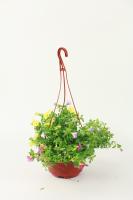When to Plant Fig Tree in Zone 7
Fig trees are a popular fruit tree variety among gardeners, and they can thrive in different hardiness zones. However, planting a fig tree in zone 7 requires some considerations regarding the climate and soil conditions. Fig trees should be planted in the spring or fall when the temperatures are cooler, and the soil is moist enough to support the growth and development of the tree roots.
Soil Conditions for Fig Tree Planting in Zone 7
In zone 7, the soil conditions may vary depending on the location and the climate. However, fig trees prefer well-draining soil with a pH range from 6.0 to 6.5. The soil should be rich in organic matter, which can enhance the soil structure, fertility, and water retention capacity. To prepare the soil for planting, gardeners should loosen the soil to a depth of at least 12 inches and amend it with compost or aged manure.
Climatic Factors for Fig Tree Planting in Zone 7
When planting a fig tree in zone 7, gardeners should consider the climatic factors that can affect the growth and productivity of the tree. Fig trees can thrive in warm and humid climates with long summers, but they require a dormant period with colder temperatures to stimulate the fruiting process. In zone 7, gardeners need to choose a location with full sun exposure, protection from strong winds, and well-draining soil that can prevent waterlogging in rainy seasons.
Tips for Fig Tree Planting in Zone 7
Here are some tips for planting a fig tree in zone 7:
Choose a disease-resistant fig tree variety, such as Brown Turkey, Chicago Hardy, or Celeste, which can tolerate the colder temperature and fluctuating weather conditions in zone 7.
Plant the fig tree in a location with good air circulation, away from buildings or trees that can shade it or block the sun.
Dig a hole that is twice as wide and deep as the root ball of the tree, and make sure to backfill it with amended soil and water well after planting.
Apply a layer of mulch around the fig tree to retain soil moisture, suppress weed growth, and protect the roots from extreme temperature fluctuations.
Water the fig tree regularly, especially during hot and dry spells, but avoid overwatering, which can cause root rot or fungal diseases.
Prune the fig tree during the dormant season to remove dead, damaged, or diseased branches and maintain its shape and size.
Conclusion
Planting a fig tree in zone 7 can be a rewarding experience for gardeners who want to enjoy the sweet and juicy fruit of this tree. By choosing the right location, soil, and variety, and following the tips for planting and care, gardeners can ensure the healthy growth and abundant production of their fig tree. Whether you plant a fig tree in the spring or fall, make sure to give it the best start possible and watch it thrive in your backyard or garden.

 how many times do yo...
how many times do yo... how many planted tre...
how many planted tre... how many pine trees ...
how many pine trees ... how many pecan trees...
how many pecan trees... how many plants comp...
how many plants comp... how many plants can ...
how many plants can ... how many plants and ...
how many plants and ... how many pepper plan...
how many pepper plan...































